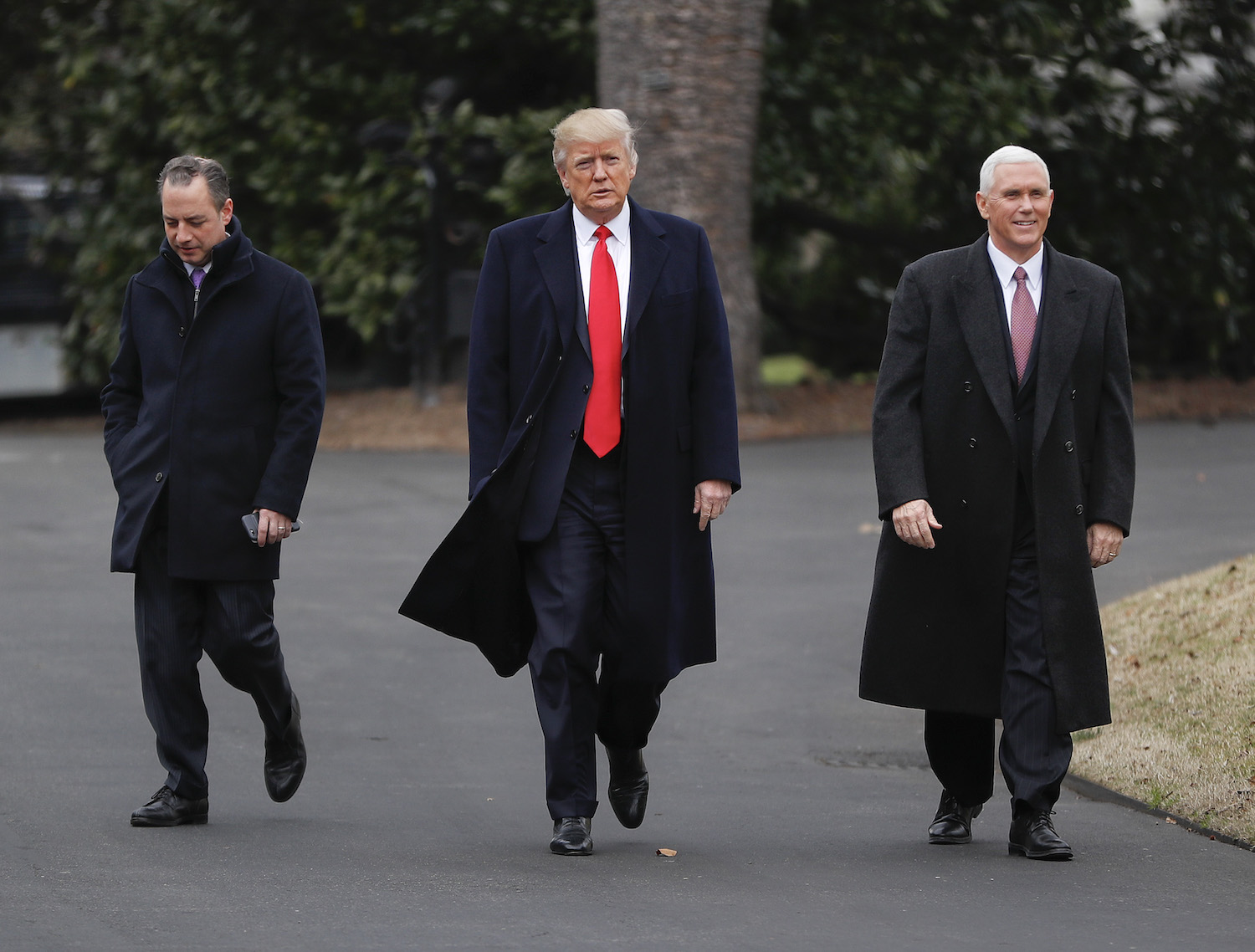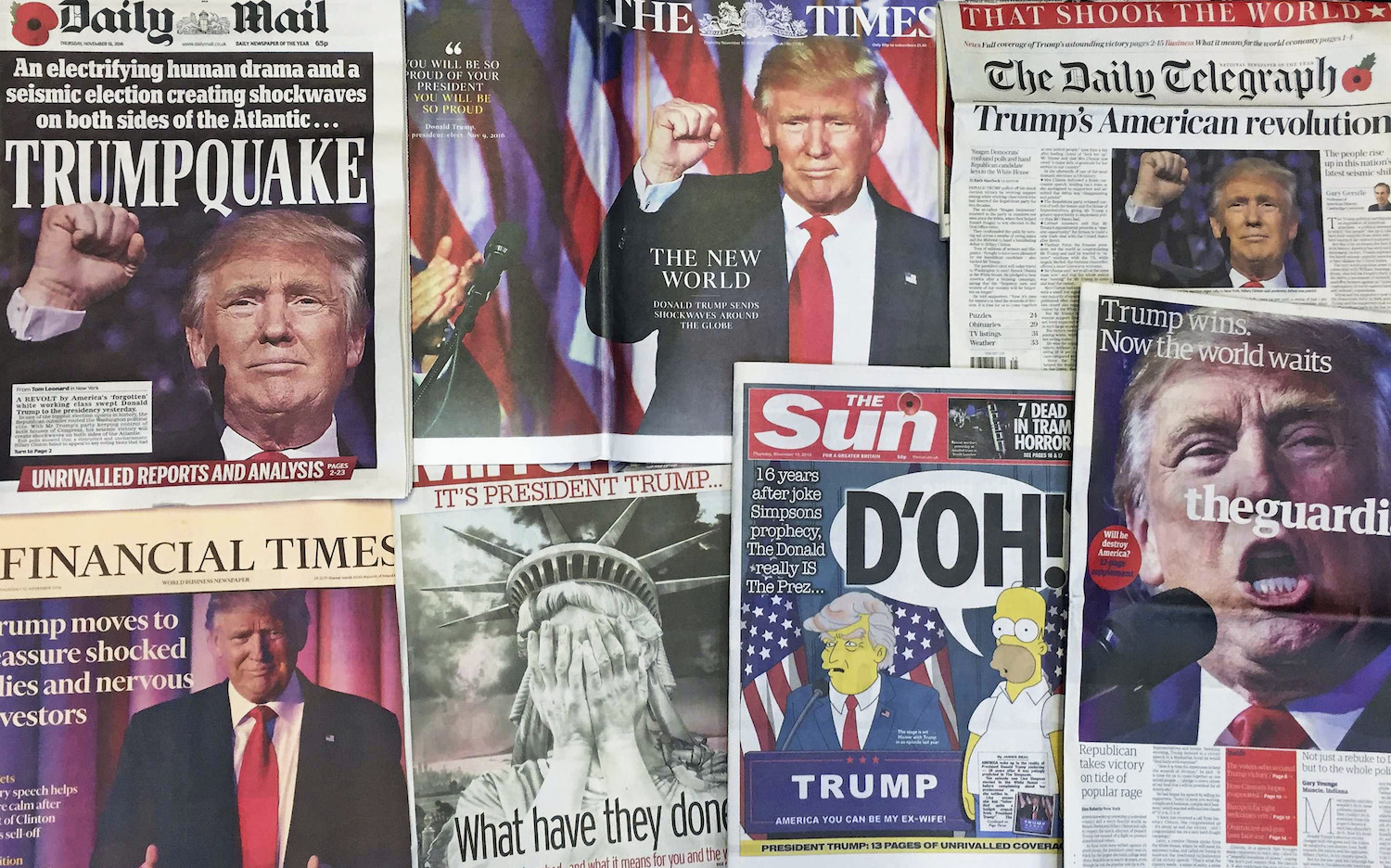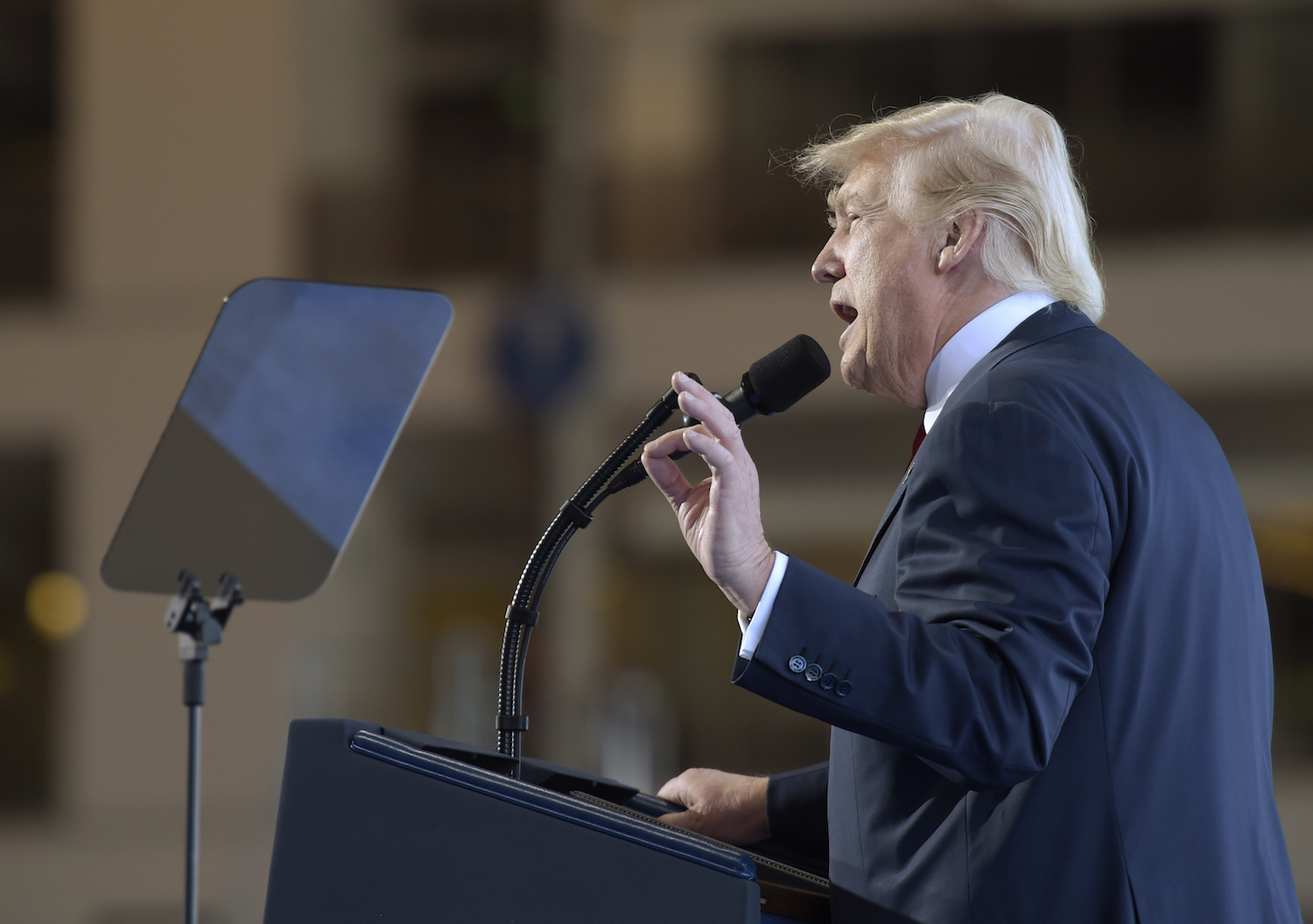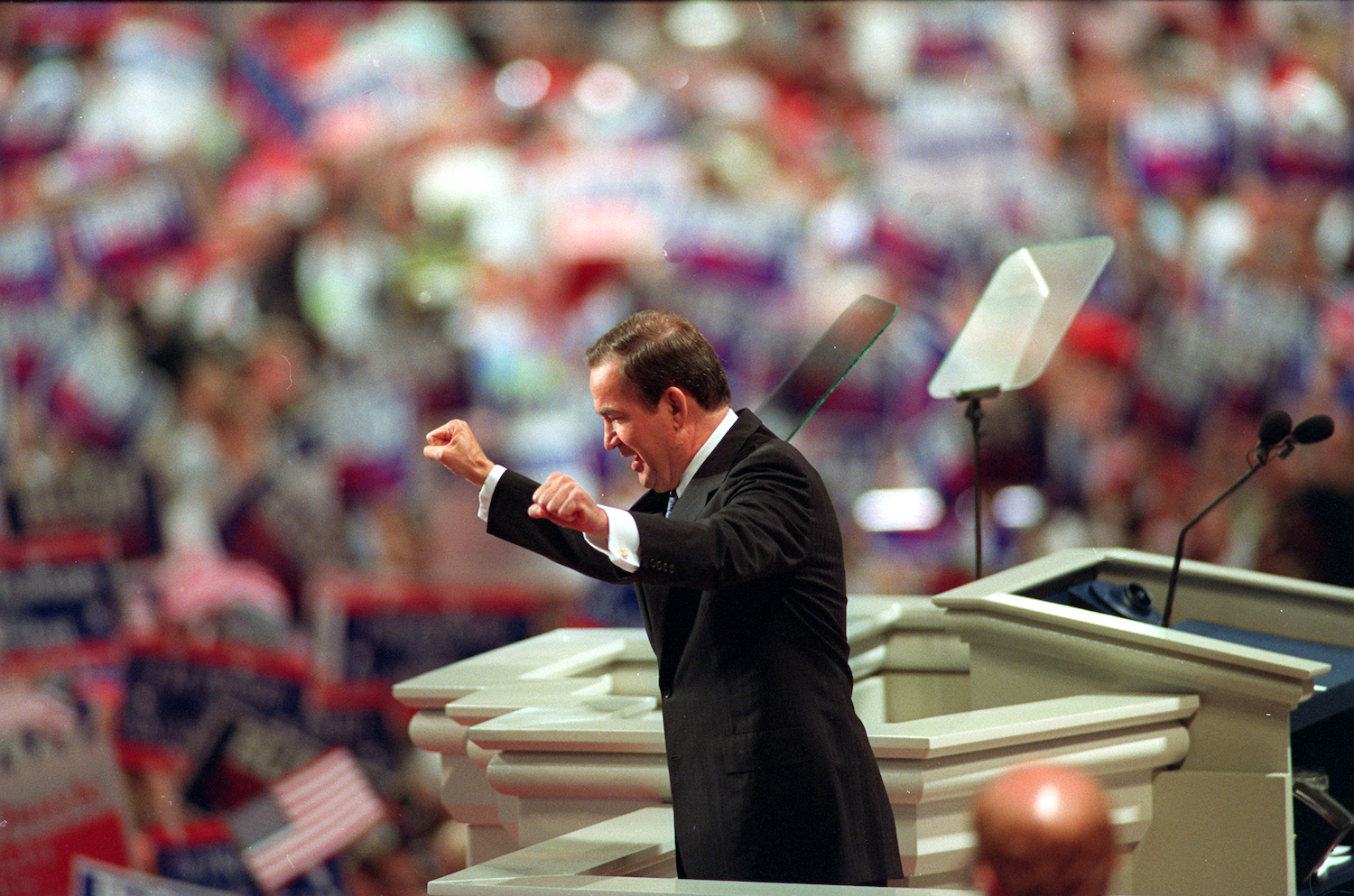In 2016, Donald Trump pulled out of the Conservative Political Action Conference (CPAC) at the last minute after having spoken there in previous years, delivering the nation’s largest gathering of conservative activists “about as strong a slap in the face as you can get,” in the words of a past American Conservative Union chairman.
This year, Trump is going to CPAC as the president of the United States. And his take on conservatism often differs from that which has dominated the Republican Party for nearly 40 years.
Ronald Reagan said of his first CPAC speech as president: “You dance with the one that brung ya.” But before this year, the conservative movement and Trump waltzed together only reluctantly, if at all. Even as Trump won the Republican presidential nomination, they tussled over who would lead.
“He owes the free-market intelligentsia absolutely nothing,” said a Republican strategist.
Trump nevertheless made a series of commitments to conservatives on the campaign trail, and so far he has kept them. He reinstated the “Mexico City” policy banning public funding of organizations that perform or promote abortions overseas. He celebrated the March for Life on social media. He quickly issued executive orders targeting Obamacare (which he wants to repeal), regulations and federal hiring.
If Trump isn’t a creature of the conservative movement, his vice president, Mike Pence, certainly is. So are many of Trump’s early appointees: Transportation Secretary Elaine Chao, Education Secretary Betsy DeVos, Secretary of Health and Human Services Tom Price, and especially Trump-friendly Attorney General Jeff Sessions. Counselor to the president Kellyanne Conway, a ubiquitous presence on national television, has labored in conservative politics since she was in her 20s.
The Trump White House has distinguished itself from predecessors by calling on conservative media outlets at press conferences and briefings frequently, much to the consternation of non-conservative journalists who make it plain they think they are more important. “This fix is in,” complained CNN’s Jim Acosta, who appears to be auditioning to play Sam Donaldson to Trump’s Reagan.

If Trump isn’t a creature of the conservative movement, his vice president, Mike Pence, certainly is, as well as many of his early appointees. (AP Photo)
Most importantly, Trump’s nomination of Judge Neil Gorsuch to the Supreme Court fulfilled a promise to replace venerated conservative jurist Antonin Scalia with a justice from the same originalist mold. In his press conference announcing Gorsuch as the pick, Trump introduced Scalia’s widow.
“I am so happy she’s with us,” the president said, before adding, “she is really the ultimate representative of the late, great Justice Antonin Scalia, whose image and genius was in my mind throughout the decision-making process.”
Things weren’t always so cordial. National Review, founded in 1955 by conservative movement icon William F. Buckley Jr., published an “Against Trump” issue featuring a symposium of right-leaning writers inveighing against the man who was already the clear Republican front-runner.
“National Review is a failing publication that has lost its way. Its circulation is way down w its influence being at an all time low. Sad!” Trump tweeted in response. “Very few people read the National Review because it only knows how to criticize, but not how to lead.” He added that the “late, great” Buckley would be “ashamed.”
But National Review’s position was representative of many working conservative journalists in Washington and New York, if not talk radio. George Will, Bill Kristol and Charles Krauthammer were among the big names aligned with Never Trump.
Pro-Trump conservative and Republican media voices were in such short supply that CNN had to go out and recruit a whole new set of pundits to defend him on their panels. The one with the deepest roots in the conservative movement was former Reagan White House political director Jeffrey Lord, who unlike many of his colleagues, compared Trump to the 40th president.
“We used to have a saying in the Reagan White House: Let Reagan be Reagan,” Lord wrote in the Reaganite American Spectator. “Donald Trump, like Ronald Reagan, is an American Original. Let Donald Trump be Donald Trump.”
Similarly, new outlets stepped in to fill the void left by mainline conservative publications that were unwilling to back Trump even as he became the Republican voters’ choice.
Most movement conservatives called Trump a liberal and a Democrat. They pointed to his past donations to Democratic politicians, including Hillary Clinton, House Minority Leader Nancy Pelosi, Senate Minority Leader Chuck Schumer and his predecessor Harry Reid. They noted he had supported abortion rights, gun control, a wealth tax and single-payer healthcare.

Many working conservative journalists in Washington and New York, such as George Will, Bill Kristol and Charles Krauthammer, were among the big names aligned with Never Trump. (AP Photo)
The Right was supposed to be a “three-legged stool” of economic, social and national security conservatism. Trump appeared to be sawing off the first two legs. By condemning the Iraq War, foreswearing regime change in the Middle East, praising dictators for containing Islamic terrorists and hinting at rapprochement with Vladimir Putin’s Russia, Trump was discarding the third, too, some conservatives believed.
“I have to stay true to my principles also,” Trump said. “And I’m a conservative, but don’t forget: This is called the ‘Republican Party,’ not the ‘conservative party.’ ”
Those who wanted a more conservative Republican Party were similarly offhand with Trump. “I cannot support Donald Trump,” wrote up-and-coming conservative Sen. Ben Sasse, R-Neb. “If Donald Trump ends up as the GOP nominee, conservatives will need to find a third option.”
“It’s time for us not to settle,” said Sen. Mike Lee, R-Utah, one of the most conservative lawmakers in Washington. “It’s time for us to expect more.”
While conservative elites were more uniformly anti-Trump than grassroots activists, the results of the 2016 CPAC straw poll suggested the Right’s antipathy ran deeper. Forty percent of participants indicated Sen. Ted Cruz, R-Texas, as their first choice for president, compared to 30 percent for Sen. Marco Rubio, R-Fla. Trump was a distant third with 15 percent of the vote.
Cruz was the first or second choice of nearly two-thirds of the straw poll’s voters, with Rubio picked first or second by 59 percent. At 24 percent, Trump’s combined total lagged slightly behind that of Ohio Gov. John Kasich.
Straw polls are by definition not scientific, but they are good tests of organizational strength and grassroots enthusiasm. CPAC winners have lost the Republican presidential nomination before. But the activist support for Cruz and Rubio, both of whom owed their Senate seats to Tea Party support in GOP primaries, was genuine.
Conservatives entered 2016 believing they had the best chance to get one of their own nominated since Reagan. While many of them admired past nominees, such as Mitt Romney, and presidents, such as George W. Bush, only Reagan and Barry Goldwater really came from the movement. The primaries were supposed to pit a candidate in the establishment “lane” against another in the conservative lane, with conservatives finally facing the establishment on something like even terms.

The Right was supposed to be a “three-legged stool” of economic, social and national security conservatism. Trump appeared to be sawing off the first two legs. (AP Photo)
Trump overrode all this and then soundly defeated Cruz and Rubio in the primaries, while other movement favorites such as Wisconsin Gov. Scott Walker never got off the ground. That isn’t the most important reason so many conservatives had difficulty reconciling themselves to Trump’s nomination, but it surely contributed to the rancor.
The New York businessman’s nomination, with strong support from centrist primary voters in the Northeast and somewhat conservative voters in the South, and then his victory in the general election, winning states Republicans hadn’t carried at the presidential level since the 1980s, raised questions.
Was Trump sui generis, a rich celebrity who sucked up all the media oxygen and fortunately stumbled upon Republican voters in an angry mood? Or did he signal that movement conservatism had a limited appeal even to the GOP primary electorate?
Trump has his own take on conservatism. “I view the word conservative as a derivative … of the word conserve,” he said in a Republican primary debate. “We want to conserve our country. We want to save our country.
“Well, I think it’s a person that doesn’t want to take, overly, risks. I think that’s a good thing,” Trump told CBS when asked to define “conservative.”
“I think it’s a person that wants to — in terms of government, I’m talking about — a person that wants to conserve, a person that wants to, in a financial sense, balance budgets, a person that feels strongly about the military,” he added. “And I feel very strongly about the military.”
“I’m very conservative fiscally,” Trump told the Washington Examiner. “I mean, we owe $19 trillion, this is going to destroy our country, we’re going to be destroyed by what’s going on fiscally.”
But Trump made no bones about disagreeing with other self-described conservatives. On Iraq, he complained to an interviewer about the cost to taxpayers, the loss of life, the growth of Iranian influence over the region. “And that’s not a conservative position,” he said.
“Intellectually, Trumpism bears a striking resemblance to the anti-interventionist, anti-globalist, immigration-restrictionist, America First worldview propounded by various paleoconservatives during the 1990s and ever since,” observed conservative historian George Nash.

Foreshadowing Trump’s tweets shaming companies that ship jobs overseas, Buchanan ripped such corporations as “amoral behemoths” whose “loyalty is only to the bottom line.” (AP Photo)
Politically, the most important of these paleoconservatives was Pat Buchanan, a longtime columnist, veteran of the Nixon and Reagan administrations and two-time candidate for the GOP presidential nomination. He embraced most conventionally conservative positions, but he rejected free trade, wanted to curtail immigration, and favored a less interventionist foreign policy, opposing even George H.W. Bush’s Persian Gulf War.
While many Republicans argued these were not conservative positions, Buchanan countered that it was his critics who were out of step with the party’s traditions. “Every Republican platform from 1884 to 1944 professed the party’s faith in protection,” he wrote. “Free trade was introduced by the party of Woodrow Wilson and FDR.”
Foreshadowing Trump’s tweets shaming companies that ship jobs overseas, Buchanan ripped such corporations as “amoral behemoths” whose “loyalty is only to the bottom line.”
Buchanan addressed the 1992 Republican convention, praising “conservatives of the heart” and calling for engagement in the culture war. But his strongest bid came in 1996, when he finished second in Iowa and beat eventual nominee Bob Dole in New Hampshire, receiving 3 million votes nationally.
Three years later, Buchanan’s message was less in demand among Republican voters so he decided to seek the presidential nomination of Ross Perot’s Reform Party instead. To counter Buchanan, a rival faction of the party tried to draft Trump to run against him.
It was during Trump’s short-lived campaign against Buchanan that he took many of the liberal positions that would dog him over a decade later, especially as he tried to contrast himself with the conservative writer on gay rights and abortion.
Trump ultimately decided against running for president in the 2000 election. Paleoconservatism became politically irrelevant after Buchanan did poorly in the general election, winning less than 1 percent of the vote as the Reform Party nominee. Buchanan’s admirers clustered around a few small magazines criticizing George W. Bush’s presidency from the right.
Sixteen years later, Trump won the GOP nomination taking Buchananite positions on trade, immigration and foreign policy, abandoning the centrism of his Reform Party days. Trump isn’t as devoutly religious or as philosophical as Buchanan. Nor are his policy views as detailed. But the president’s supporters, buoyed by Brexit and other international examples, believe it’s time for a conservatism that rejects globalism.
Other more detailed philosophical men have entered Trump’s inner circle. One is Steve Bannon, former head of Breitbart, who has tied Trump’s success to the rise of a nationalist and populist Right in Europe. Another is former top Sessions aide Stephen Miller, who has argued, “One of the things that we’re missing from our political dialogue right now is the idea that the United States is a home … America is a family.”
Is this conservatism’s future? That partly depends on whether Trump’s administration succeeds. Just a few years ago, the conventional wisdom was that conservatives were living in a “libertarian moment,” while Trump is less of a proponent of constitutionally limited government than the old paleoconservatives.
Things change quickly. The Heritage Foundation’s Lee Edwards noted that movement conservatism has entrenched institutions, while “Trumpism” mostly does not. The bench of Trump-like candidates is not yet deep. A lot of GOP candidates sound like Rubio and Cruz.
Many conservatives have embraced Trump because he won and has so far been an ally on important issues. But, as in the case of House Speaker Paul Ryan, that does not mean they have embraced his more distinctly Trumpist views. Ryan defeated a Trump imitator in his own primary by more than 80 points last year.
Given enough time, however, presidents can do more to define their parties and affiliated movements than any other political figure. Last year, a major GOP donor told the Washington Examiner, “I don’t think Donald Trump represents the Republican Party.” That donor, Betsy DeVos, now sits in President Trump’s Cabinet.

